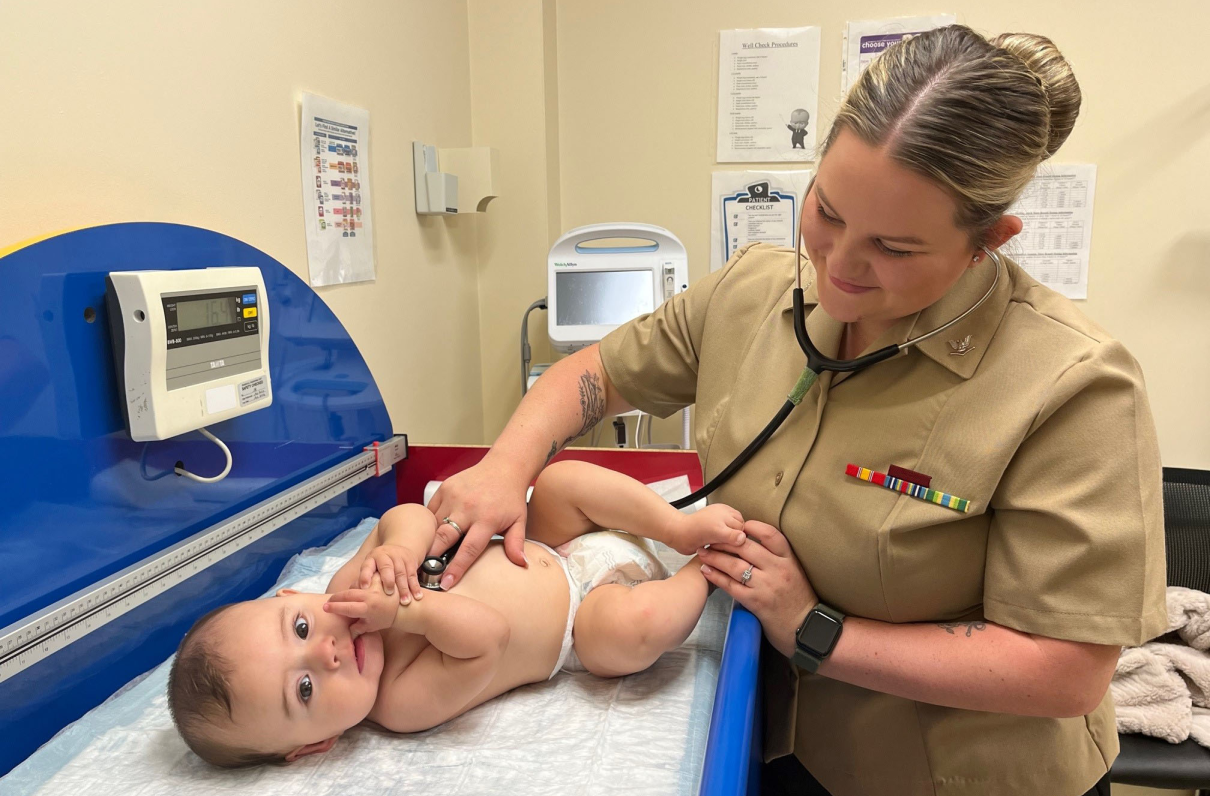Expanded TRICARE coverage of fertility treatments included in the House and Senate versions of the FY 2025 National Defense Authorization Act (NDAA) is part of “essential health care” that’s “vital to retaining the skilled force we need to defend our nation,” MOAA and other advocacy groups wrote to congressional leaders in an Oct. 10 letter.
These provisions would require TRICARE to expand such coverage, including assisted reproductive technology (ART) and in vitro fertilization (IVF), to active duty servicemembers and their spouses. MOAA supports the expanded benefit for active duty families but has also urged Congress to modify this provision to cover all TRICARE beneficiaries to maintain a uniform health care benefit across all sponsor categories and beneficiary segments.
“It is important to note that many military retirees are in their late thirties or early forties and may have deferred starting a family due to the demands of their military career,” reads the letter, signed by more than a dozen groups including the National Military Family Association and the Elizabeth Dole Foundation and addressed to the chairmen and ranking members of both the House and Senate Armed Services committees.
Will Your Benefits Keep Pace?
Supporting expanded TRICARE coverage for ART and IVF aligns with one of MOAA’s enduring priorities: Ensuring TRICARE coverage keeps up with evolving technologies and treatment protocols, as well as benchmarks established by top commercial health care plans.
Employer-sponsored coverage for fertility treatments has grown significantly in recent years, with about 47% of large companies reporting IVF coverage as part of their health plans as of 2021 (some may offer only partial coverage).
The Federal Employee Health Benefits (FEHB) Program, a key benchmark for TRICARE, stipulates all carriers cover procedures and drugs for artificial insemination – a procedure not covered by TRICARE. FEHB plans must also cover drugs for three cycles of IVF.
FEHB fertility coverage options will grow with the 2025 plan year – federal employees will have 25 FEHB plans offering IVF coverage above the required benefit, including two nationwide plans offering an annual IVF benefit of $25,000 that can cover the cost of IVF procedures and comes on top of the three cycles of drugs required by all plans.
[RELATED: Push to Retain Skilled Nurses at Military Facilities Moves Forward in NDAA]
The letter cautions Congress regarding an alternate Senate provision that would establish a demonstration program to provide cash reimbursement to active duty families to reduce out-of-pocket costs associated with fertility treatments but would require an additional four-year active duty service obligation. TRICARE is an essential component of the military compensation and benefits package; coverage for medical care should not be contingent on an additional service commitment.
Provisions found in both the House and Senate versions of the NDAA typically make it through the conference process to be included in the final bill. However, DoD’s strong support for a different section in the Senate-proposed bill – one that would direct a feasibility and cost assessment for expanding coverage of ART and IVF under TRICARE – makes the benefit expansion uncertain.
[RELATED: Military Pay, TRICARE Upgrades on Tap When Congress Returns to Work]
A world-class TRICARE benefit is essential to recruiting and retaining the all-volunteer force. MOAA appreciates House and Senate efforts to update TRICARE coverage to include ART/IVF, care that is crucial to many military families.
MEDIPLUS® TRICARE Supplement
Works hand-in-hand with your Select or Prime Plan. Count on valuable protection.

